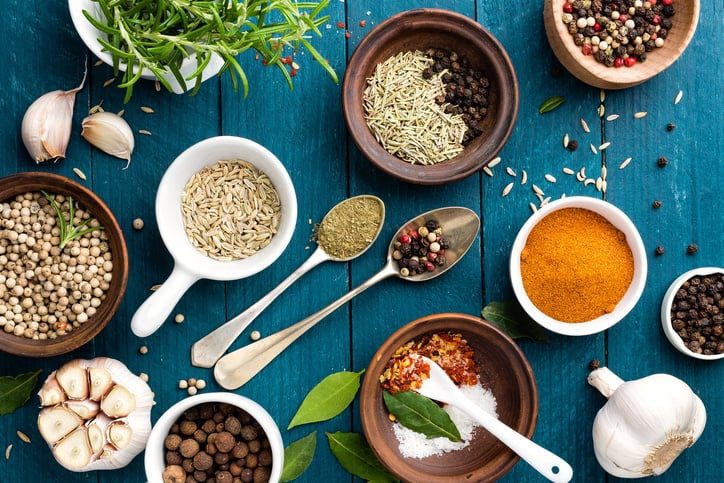U.S. remains one of the largest markets for texturized vegetable protein in the world, which invariably makes it a lucrative pocket for manufacturers. The U.S. accounted for 91.7% of the North America market for texturized vegetable protein in 2019. The increasing demand for natural ingredients is an opportunity for the manufacturers to expand their portfolio over the forecast period.
NEWARK, Del, Sept. 05, 2022 (GLOBE NEWSWIRE) — The rising awareness among consumers about a multitude of health benefits of plant-based sources of protein has been aiding the market for texturized vegetable protein. Future Market Insights (FMI) in a new study has forecast the market to reach US$ 1.03 Bn by the end of 2022. Growth forecasts continue to remain positive for the market, thanks to increasing number of vegetarian population worldwide.
Continuously increasing demand for food & beverage products which provide nutritional benefits with sensory taste is one of the major factor driving the demand for texturized vegetable protein. Due to increasing awareness regarding animal cruelty and environmental damages caused by excessive consumption of might the demand for texturized vegetable protein is expected to increase.
These protein sources also contain lower amount of saturated fat and cholesterol as compared to meat products hence are considered to have more health benefits. Among products available, the demand for soy protein is expected to be the highest. As per FMI, the soy protein segment is forecast to account for over 80% of the market through 2031.

Key Takeaways from the Texturized Vegetable Protein Market Study
The North American texturized vegetable protein market leads in terms of market size and accounts for 30.1% of the global texturized vegetable protein market in 2021. The Soy Protein texturized vegetable protein market is expected to have a market share of 70.0% of the global texturized vegetable protein market in 2031. In the nature segment, Conventional holds 97.9 % of the texturized vegetable protein market.
In the end-user segment, Industry holds the maximum market share of 76.1% in 2021 of texturized vegetable protein market where Meat Analogues holds 42.8% globally in 2021. Soy protein has a major share by product type and is anticipated to grow significantly over the forecast period. North America have a large number of companies and thus, majority of companies are emphasizing on offering non-GMO products, which are processed through extrusion-based technology, with enhanced functional properties so that their product can comply with strict requirements of clean label products.
“Benefits of opting vegan proteins are now gaining popularity due to which many big companies are investing in the production and innovation of texturized vegetable protein. Several manufacturers are acquiring or merging with key companies to expand their product portfolio and increase their market share. E-commerce and online stores are easing entry barriers and distribution costs. These factors are expected to make competition fiercer within the market” said a lead analyst at FMI

Texturized Vegetable Protein Market Key Segments
Product Type
- Soy Protein
- Wheat Protein
- Pea Protein
- Rice Protein
Nature
- Organic
- Conventional
Form
- Chunks
- Slice
- Flakes
- Granules
End Users
- Household
- Commercial
- IndustryFood IndustryBakery
- Snacks
- Ready Meals
- Sports Nutrition
- Clinical Nutrition
- Baby Food
- Meat Analogues
- Others
- Animal Feed
- Food Industry
- Bakery
- Snacks
- Ready Meals
- Sports Nutrition
- Clinical Nutrition
- Baby Food
- Meat Analogues
- Others
- Animal Feed
- Food Industry
Distribution Channel
- Direct
- Indirect
Who is winning?
The global population is increasing at a rapid rate and it is expected that the population will be around 9.5 Bn by 2050 from 7 Bn in 2017. The situation is set to put quite a strain on the food and supply of raw material, resulting in the need for alternate protein sources. Key players operating in the market are adopting various strategies, which include expansion of production capacity and launch of various products.
A few of the leading players operating in the texturized vegetable protein market are Archer Daniels Midland Company, CHS Inc., Roquette Frères, Beneo GmbH, Danisco A/S, Vestkron A/S, Cargill Inc., FUJI OIL CO., LTD., Puris Proteins, LLC., MGP Ingredients, Inc., Crown Soya Protein Group, Sotexpro SA, Wilmar International Ltd., Gushen Biotechnology Group Co., Ltd., Ingredion Inc.
Table of Content
1. Executive Summary
1.1. Global Market Outlook
1.2. Summary of Statistics
1.3. Summary of Key Findings
1.4. Analysis and Recommendations
2. Market Overview
2.1. Market Coverage / Taxonomy
2.2. Market Definition / Scope / Limitations
3. Product Innovation and Development
3.1. Cultural Customization to Target Specific Populations and Ethnic Groups
3.2. Creating New Delivery Mechanisms
3.3. Shift towards Natural Ingredients
3.4. Brand Differentiation through Packaging
Explore FMI’s related ongoing Coverage on Food and Beverage Domain
Hydrolysed Vegetable Protein Market Size: Hydrolysed Vegetable Protein Market Analysis, Size & Forecast to 2030.
Protein Ingredients Market Share: Protein ingredients market is expected to reach a valuation of USD 47.4 Bn by 2032, rising at a CAGR of 5.6% for 2022-32.
Protein Hydrolysate Ingredients Market Trends: Protein hydrolysate ingredients market is expected to reach US$ 1.0 Bn by 2031, growing at a CAGR of 7.30% during 2021- 31.
Cultured Wheat Market Demand: Cultured wheat market value is anticipated to rise to US$ 625.5 Million by 2032.
Convenience Food Market Analysis: Convenience food is anticipated to rise at a CAGR of 7% and exhibit a revenue growth of US$ 1,086.425 Million by 2032.
About Future Market Insights, Inc.
Future Market Insights, Inc. is an ESOMAR-certified business consulting & market research firm, a member of the Greater New York Chamber of Commerce and is headquartered in Delaware, USA. A recipient of Clutch Leaders Award 2022 on account of high client score (4.9/5), we have been collaborating with global enterprises in their business transformation journey and helping them deliver on their business ambitions. 80% of the largest Forbes 1000 enterprises are our clients. We serve global clients across all leading & niche market segments across all major industries.








